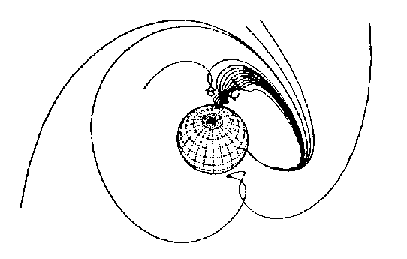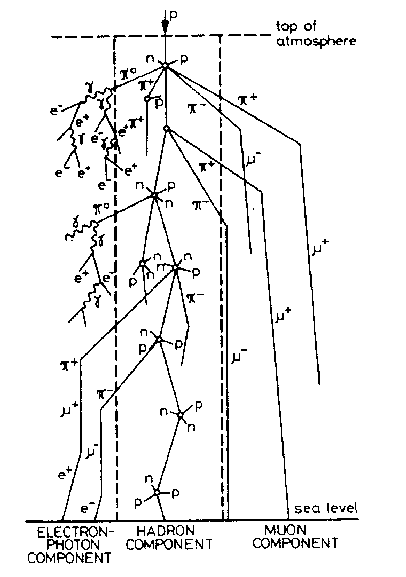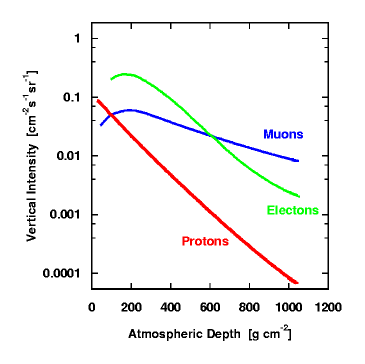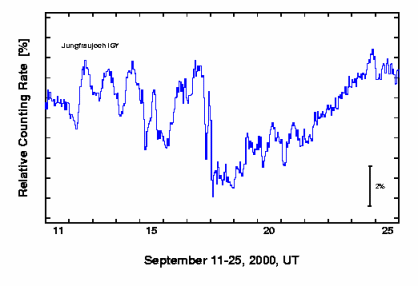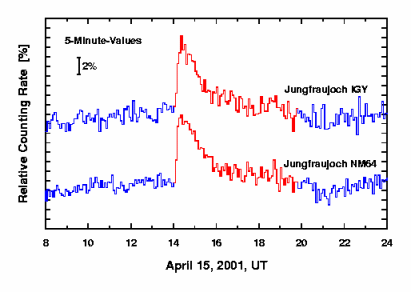Solar cosmic rays are produced in high energy processes at or near the Sun after a violent eruption at the Sun.
Composition of galactic cosmic rays:
- Protons: 87 %
- Helium nuclei: 12 %
- Heavy atomic nuclei: 1 %

Energy spectrum of primary cosmic ray particles
